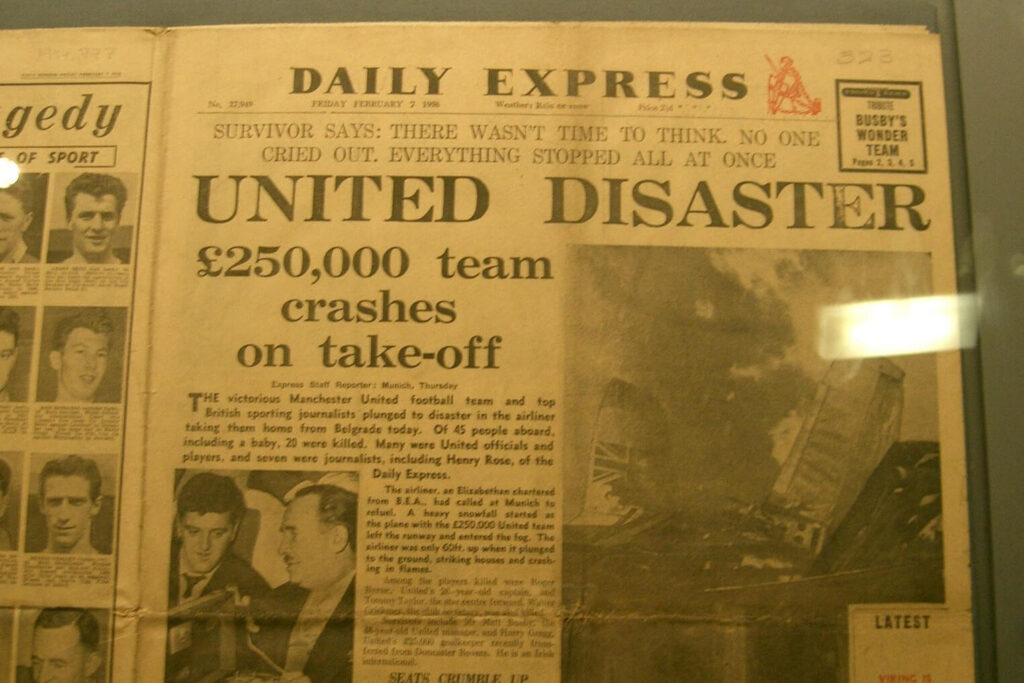64 years ago, on February 6, 1958, British European Airways flight 609, a charter flight bound for Manchester carrying 44 passengers, crashed on takeoff from Munich Airport.
The plane, an Airspeed Ambassador, was en-route from Belgrade in Yugoslavia to Manchester, England and had stopped at Munich to refuel. On board was the Manchester United football team, who were travelling back after a European Cup match.
After refueling, the crew commenced the takeoff, but as the plane reached full power, the Captain noticed one of the instrument gauges was fluctuating. This was accompanied by an unusual sound coming from the engines. The co-pilot, who was handling the aircraft, abandoned the takeoff.

BEA Airspeed Ambassador aircraft, similar to the aircraft involved in the crash. Image: RuthAS, CC BY 3.0
Three minutes later, the crew attempted the takeoff again. However, 40 seconds after applying full power, the takeoff was abandoned again, this time due to the engines over accelerating, a common problem with the aircraft type.
The crew taxied the aircraft back to the terminal where all the passengers disembarked, believing the flight would be cancelled as heavy snow began to fall.
Speaking to the engineer, the Captain was advised to hold the aircraft overnight but, anxious to meet the schedule, he elected to try a third time. On this takeoff roll, he decided to open the throttles more slowly, to avoid the engine trouble encountered previously. Although the takeoff distance would therefore be increased, the Captain calculated that the 2km runway would be sufficient.
Just before 15:00hrs, the passengers reboarded the aircraft and the crew received takeoff clearance. The plane accelerated and reached 117kts (V1, the speed at which it is no longer safe to abort the takeoff) and soon reached 119kts, at which point the speed stopped rising and then began to decrease.
Moments later, the aircraft ran off the end of the runway, crashing through the perimeter fence and skidding into a house, which tore off the left wing. In the cabin, Harry Greg, the team’s goalkeeper, managed to save some of the passengers, including Bobby Charlton.
20 people died in the crash, and three died later in hospital from their injuries. Eight Manchester United players were killed in total along with club staff and journalists who were following the team.
What went wrong?
The initial German investigation concluded that the crash had been caused by pilot error, claiming that a rough layer of ice on the wings of the aircraft hindered the aerodynamics and increased the takeoff speed needed to become airborne.
However, the Captain of the flight campaigned for nearly a decade before the British Government held an inquiry, shedding light on other witnesses and evidence. Namely, that the aircraft did not have ice on the wings, or enough ice to be the sole cause of the accident.
The 1968 inquiry determined that slush on the runway was the probable cause of the accident. Once the aircraft hit the slush, which became progressively worse down the runway, the speed began to decrease. As a result, the aircraft was unable to maintain its lift-off speed.
Adding to the great tragedy, some of the world’s greatest football players were killed on that day in 1958. Manchester United Football Club lost eight star players and would take years to reform.
The club finally realized its European dream when in 1968, 10 years after that tragic day, survivor and manager, Matt Busby took the team to Wembley and won the European Cup final

